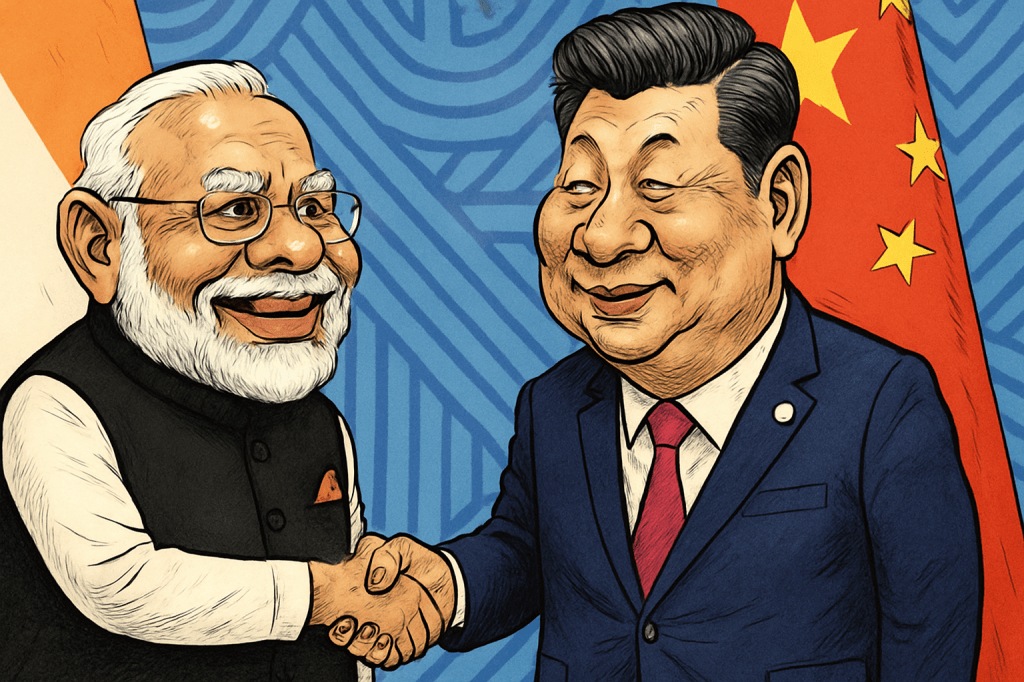In recent days, India and China have sought to mend their strained ties, a shift largely prompted by global trade disruptions triggered by US President Donald Trump’s tariff policies. During their latest bilateral summit, Prime Minister Narendra Modi and President Xi Jinping expressed optimism about a “newfound commitment” to strengthen relations. They spoke of shared civilisational values, their roles in the Global South, and the potential for economic cooperation.
The Ministry of External Affairs (MEA) later emphasised that both sides see themselves as development partners rather than rivals. Yet, beneath the friendly words of cooperation lies a more complex and delicate reality.
Expert warns India
Wendy Cutler, Senior Vice President at the Asia Society Policy Institute, has sounded caution amid India-China diplomatic thaw. Writing on LinkedIn, she observed that Modi and Xi “used all the diplomatic words available” to convey goodwill, but warned that the structural imbalances in trade remain unresolved.
Noting that, India’s trade deficit with China reached $99 billion last year, and this figure shows no sign of narrowing in the near future. For Delhi, this poses a strategic challenge, as it undermines efforts to build self-reliance and foster domestic manufacturing.
Moreover, India is in a difficult position. While it seeks to attract investment from companies exiting China and expand its own production base, it remains reliant on Chinese intermediate goods for several industries. This dependence weakens India’s bargaining position.
“Modi and Xi used all the diplomatic words available to signal a new found commitment by both to improve relations, partially motivated by high Trump tariffs on both.Improving trade ties won’t be easy. India’s large and growing bilateral goods trade deficit with China, reaching $99 billion last year, is not going away overnight and poses serious challenges to Delhi. As India seeks to attract foreign investment leaving China and to grow its own manufacturing base, it’s in need of Chinese intermediate goods. Moreover, high US tariffs have led Beijing to export more to others, including India. This comes at a time with excessive Chinese manufacturing output looking for a market outside of its borders. India, like Southeast Asia, is grappling with the onslaught of Chinese imports, threatening to displace local production. India has already initiated antidumping cases against targeted Chinese imports and we should fully expect to see more restrictive measures to be enacted. So, before we conclude that the India-China trade relationship is on the verge of new heights as the leaders’ statements suggest, let’s keep in mind the structural and political challenges to making their bilateral trade relationship more balanced,” reads Cutler post on LinkedIn.
Chinese export surge
While Beijing’s rhetoric of friendship appeals to New Delhi, there is a parallel reality. China’s vast manufacturing surplus, worsened by American restrictions, is flooding markets abroad. India, like many Southeast Asian countries, is grappling with a surge of cheap Chinese imports that threaten to displace local production.
To counter this, India has already launched several antidumping cases targeting Chinese goods. Wendy Cutler suggested Delhi to adopt even more restrictive measures in the future to shield its industries. This highlights the contradiction at the heart of India-China trade relations that cooperation may be politically desirable, but competition on the economic front is unavoidable.
Trump tariffs and India’s closeness with China
The trade landscape has been further complicated by punitive US tariffs. Washington recently imposed duties of up to 50 per cent on Indian goods, citing Delhi’s continued purchases of Russian oil. Beijing swiftly condemned the move, accusing the US of hypocrisy. Chinese officials stated that the US had long benefited from free trade but was now “weaponising tariffs as bargaining tools”.
China seized this moment to express solidarity with India. By pledging to stand with Delhi and by opening its markets to more Indian goods, Beijing has positioned itself as a potential partner against what it portrays as American economic coercion.
For India as per experts, managing ties with China is a matter of striking a delicate balance. On one hand, the two countries share an interest in stabilising global trade, safeguarding strategic autonomy, and amplifying the voice of the Global South. On the other, the reality of imbalanced trade ties and dependence on Chinese goods, cannot be ignored.
India may find opportunities in closer trade ties with China, especially as both nations face pressure from Washington. However, experts weigh that trust cannot be built overnight. Therefore, the “dragon and the elephant” may indeed dance together, but only with careful steps and constant vigilance.

